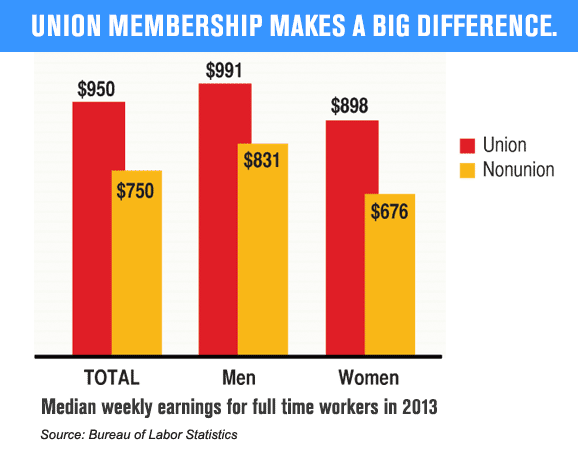

#Unions in small vs big business pro#
On March 9, the House of Representatives passed the PRO Act, which would vastly re-shape labor law by removing numerous employer advantages, although the legislation is unlikely to advance in the Senate.


But there is a difference between supporting small entrants in order to keep open an important channel of innovation and supporting an economic structure that seeks to keep businesses permanently small. The creation of new businesses, which often start out small, is one of the ways that innovation gets injected into the system. This isn’t to say small businesses are totally useless. They offer lower wages, skimpier benefits, and inferior labor protections. But small businesses can be just as bad as large businesses and are, on average, much worse. Both major parties can be seen singing small business’s praises, Democrats as a wholesome alternative to big corporations and Republicans as capitalism’s friendly face. For big business the same figure is 21 percent. Seventy percent of Americans say they have a “great deal” or “quite a lot” of confidence in small business. Against Small Business FetishismĪmerica’s enthusiasm for small business remains remarkably high. Because union representation has a lot of fixed costs, it is not economically feasible in many cases to represent small units of workers. Under US labor law, unions are organized on the establishment level, meaning employer by employer and worksite by worksite. In practice what this means is that smaller businesses, defined in terms of gross revenue as opposed to number of employees, are exempted from the NLRA.Įven for workers in small businesses that are big enough to be covered by the NLRA, unionization is often not practical. But, constitutionally speaking, only employers whose activity in interstate commerce exceeds a minimal level are subject to the NLRA. The National Labor Relations Act, which protects the rights of workers to act collectively and organize into unions, does not require an employer to have a specific number of employees to be covered. The table below shows how many employees an employer must have before they are covered by major employment protections. But small businesses are generally exempted from those protections.
#Unions in small vs big business code#
The US labor code provides a variety of protections for workers in the country. Larger employers tend to have the resources to make welfare systems for their workers while smaller employers do not. It is very time-consuming to construct a welfare state, but that is what the American system asks employers to do. In addition to small businesses providing their workers lower overall compensation, they also have less ability to construct the same elaborate benefit systems that larger employers can.


 0 kommentar(er)
0 kommentar(er)
